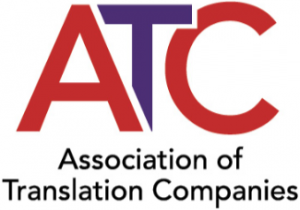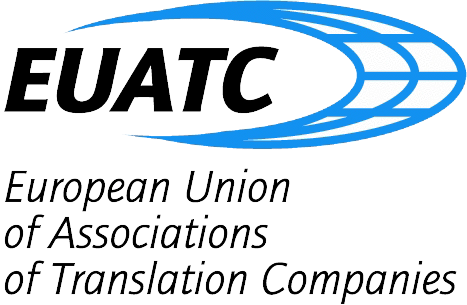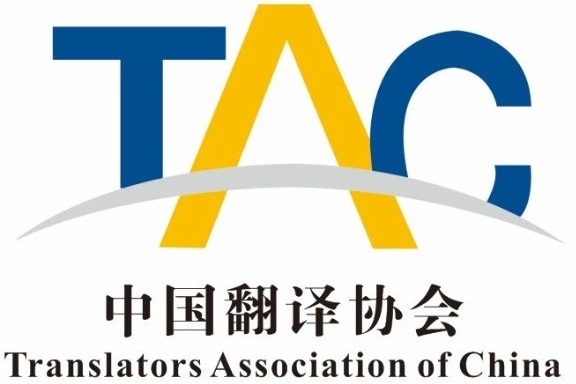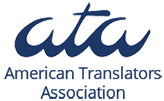We work hard at CTS to ensure our service will exceed your expectations.
We strive to provide you with high quality and hassle-free translation and interpreting services.
We are ready to support your business with the highest quality translations. We aim to exceed your expectations on all our services, on every occasion.
Interpreters for your meetings and appointments, on-site or by phone and video.
Translations of your documents, websites, software, apps, and multimedia.
Subtitles for TV & movies, games, interviews, presentations, and e-learning.
We completed our first translation project in 1998. Since then, we have provided translation services to 18,000 businesses and private individuals worldwide.
Words translated since 1998
Minutes transcribed since 2011
Minutes subtitled since 2014
Projects completed since 1998
As a leading Chinese translation company, we are perfectly positioned to support your business communications in Mandarin and Cantonese. Our mission is to help Australian and Chinese companies succeed in each other’s markets.
We’ll help you engage with Chinese-speaking customers in their own language and culture.
Our office in Sydney is supported by our teams in Shanghai, Hong Kong, London, and New York.
We donate to panda conservation projects in China, supporting a wide variety of initiatives.
We use the latest QA software to improve translation quality and eliminate errors.
We have two decades of experience providing translation and interpreting services.
We are certified by the National Accreditation Authority for Translators and Interpreters.
Chinese Translation Services is a specialist provider of Mandarin and Cantonese translations in Australia. We work with clients from all industries and sectors, from legal and finance to medical and pharma.
Over the last two decades, we have completed thousands of projects, translating over 300 million words. Many valuable lessons were learnt during this time, below we share a few tips to ensure your project is a success.
If your documents are being translated into Chinese, it is essential to work with a provider who will proofread the translated document for typos. This is because Microsoft Word and other electronic spell checkers cannot accurately detect Chinese typing errors. The proofreading will need to be performed manually by a human translator throughout the entire document since there is nothing commercially available that can automatically detect typos.
A page of English text contracts up to 33% in volume once translated into Chinese. Conversely, a page of Chinese text can expand by up to 50% when translated into English. This is something to consider if you are translating materials for publishing, such as books, websites, and magazines.
At CTS, our view on machine translations is that there are limited scenarios where it should be used. For instance, it might be helpful when a rough understanding of a document is required. We do not recommend using machine translations on work-related documents due to the high risk of mistranslation.
A good localisation adapts the translated text to be linguistically and culturally appropriate for its target market. For instance, consider the phrase, “Stocks are in the red, is it time to sell?”. An effective translation that caters to the Chinese market would need to state that stocks were falling because red represents luck and wealth in Chinese culture.
Large numbers in Chinese are counted in units of ten thousand in a metric called Wàn (Maan6 in Cantonese). For example, one hundred thousand is localised as ten Wàn, and one million is localised as one hundred Wàn. From our experience, incorrect number conversion is one of the most common translation errors, and manually reviewing them is the best way to ensure that errors are eliminated.
The official formatting of dates in Mainland China is YYYY/MM/DD, and the official currency is the Renminbi (RMB) or Chinese Yuan (CNY). In Hong Kong, the official formatting of dates is DD/MM/YYYY, and the official currency is the Hong Kong Dollar (HKD).
When clients reach out to us for translations, we often hear the terms “Mandarin” and “Cantonese” used interchangeably with “Simplified Chinese” and “Traditional Chinese”. Here, we’ll give a brief overview of their differences and when they should be used.
Mandarin and Cantonese are spoken languages. Mandarin is spoken in Mainland China, Taiwan, and Singapore, whereas Cantonese is spoken in Hong Kong and Macau. Without practice, speakers of Mandarin and Cantonese cannot understand each other since the languages are mutually unintelligible.
Simplified and Traditional Chinese are written languages. Locals in Mainland China, Singapore, and Malaysia, read and write in Simplified Chinese, whereas locals in Hong Kong, Taiwan, and Macau, read and write in Traditional Chinese characters.
Generally speaking, Chinese readers can understand both Simplified and Traditional Chinese but will find the less familiar variant a bit strange due to differences in vocabulary and terminology.
Contrary to popular belief, Chinese is not a single language but a group of languages spoken by 56 ethnic groups in China.
Officially, there are ten main varieties of Chinese. Mandarin is the official language of China, and it is spoken by more than 800 million people. The nine remaining varieties include Yue (84 million), Wu (77 million), Min (60 million), Jin (45 million), Xiang (36 million), Hakka (34 million), Gan (31 million), Hui (3.2 million), and Ping (2 million). Each of the mentioned varieties has its variations and dialects. It is estimated that there are approximately 300 Chinese languages in total.
Below are some of the most commonly searched phrases in English and their Chinese translations.
| English | Simplified Chinese Translation | Pinyin (Romanized Spelling) |
|---|---|---|
| Hello | 你好 | Nǐ hǎo |
| Thank you | 谢谢 | Xièxiè |
| Goodbye | 再见 | Zàijiàn |
| Good morning | 早上好 | Zǎoshang hǎo |
| I love you | 我爱你 | Wǒ ài nǐ |
| I miss you | 我想你 | Wǒ xiǎng nǐ |
| Good luck | 祝你好运 | Zhù nǐ hǎo yùn |
| Happy New Year | 新年快乐 | Xīnnián kuàilè |
| Happy birthday | 生日快乐 | Shēngrì kuàilè |
From small personal favours to major business dealings, guānxi can help open doors that would not have otherwise been possible. A loose translation is “relationships”, but a more direct translation is “to go through the back door”. Often misunderstood by Western counterparts as unethical behaviour or even corruption, it is a core aspect of Chinese culture and, therefore, key to doing business in China.
When it comes to the political environment in China, it is important to understand that there are many restrictions on what can be said in public. While Australians may feel comfortable openly challenging or criticising the government, the Chinese do not feel the same. In general, topics that are off-limits include Tibet and the Dalai Lama, Xinjiang, China’s territorial borders, Taiwan, Tiananmen Square, Chairman Mao, and the Cultural Revolution.
Miànzi (face) is a metaphorical expression of avoiding embarrassment or humiliation. It is an important concept in Chinese culture that is pervasive in everyday life. The Chinese will go to great lengths to save face, even if it means telling an outright lie or feigning ignorance. Understanding the concept of miànzi will significantly boost your chances of success in China.
We started as specialists in Chinese translations, but it wasn’t long before clients asked for other languages. Contact us directly for any language or dialect that you do not see listed below.
CTS is accredited and certified by professional translation associations in the UK, EU, USA, and China. We are recognised at government and international levels for our translation services.




Our clients praise us for our accurate translations, personable service, and on-time delivery.
Here are some of the amazing things they have said about working with us.
CTS stands for Chinese translation services. We are a leading Chinese translation company with over two decades of experience providing translations of documents, websites, software, and videos into Simplified Chinese and Traditional Chinese.
Yes! We started as specialists in Chinese translations, but it wasn’t long before clients started requesting other languages. We now offer translations for French, Spanish, Italian, German, Japanese, Korean, Russian, and many other languages.
We charge on a per-word or per-page basis because it is the fairest and most accurate way to calculate fees. There are no hidden charges when you work with us, and we’re fully transparent in our pricing. To get a quote, simply send us the document by email or via our quotation form, and we will get back to you within 24 hours.
It depends on your target market. Simplified Chinese is used in Mainland China, Malaysia, and Singapore, whereas Traditional Chinese is used in Hong Kong, Taiwan, and Macau.
Perhaps the biggest obstacle for Australian businesses when working with their Chinese counterparts is the difference in language and culture. Understanding core aspects of Chinese culture, such as miànzi (giving/showing face), can greatly boost your chances of success. Guanxi which loosely translates to “relationships”, is another important aspect of Chinese business culture.
Translation is the process of converting written language, whereas interpretation is the translation of spoken words. Localisation is a field of translation that involves adapting the translated text to be linguistically and culturally appropriate for a specific country or region.
NAATI is the accreditation body for translators and interpreters in Australia. Generally speaking, any document used for an official purpose that is not in English will need to be translated by a NAATI-accredited translator. Common examples of documents that require NAATI-certified translation include passports & IDs, birth and death certificates, marriage and divorce certificates, diplomas, bank statements, medical records, and business documentation such as contracts.
If you are ordering a certified translation, please ensure that all the details on the original document are correct. We are required to translate the documents exactly as it is, even if the original text is “wrong”.